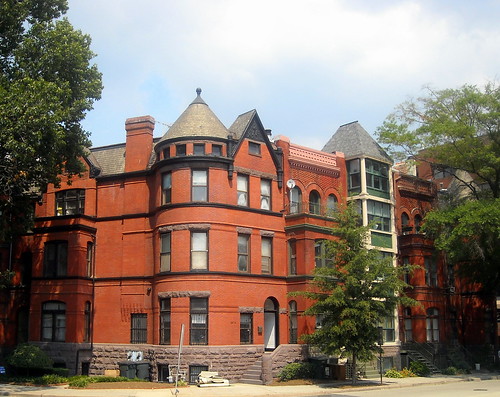
‘Schneider Triangle’
courtesy of ‘NCinDC’
Welcome to another installation of Where We Live. This time we’re focusing on the area between Dupont and Georgetown. Some call it Foggy Bottom, others call it GW, but the neighborhood most recently has been calling itself West End. Read on to hear why this area is among the city’s oldest, but also one of the most rapidly changing, neighborhoods.
History: The area is known as West End because it literally was the west end of Pierre L’Enfant’s original plan for Washington. It was also known as Foggy Bottom because of the marshy, humid conditions and the concentration of smoke-emitting businesses in the area along the waterfront (so really, it’s more like Smoggy Bottom). The rowhouses in the neighborhood housed these industrial workers, so the area was home to many Irish and German immigrants back in the 1850s, along with their breweries.
Then the area started changing rapidly. Columbian College (what we now know as George Washington University) was established near Meridian Hill in 1821, moved to the Foggy Bottom area in 1912, and expanded significantly in the 1920s and 1930s. The decline of river-oriented industries led to the closing of many waterfront employers, and the area lost a lot of ethnic diversity as industrial workers left the neighborhood. By the mid-twentieth century, rowhouses were being torn down in favor of high-density apartment buildings, and much of the character of the neighborhood was lost. We can thank the Foggy Bottom Restoration Association and the DC Restoration Office for preserving the rowhouses that still exist in the area today. (If you’re interested in more history of the neighborhood, check out this PDF brochure put out by the DC Office of Planning.)